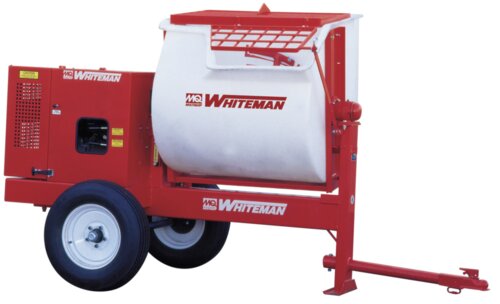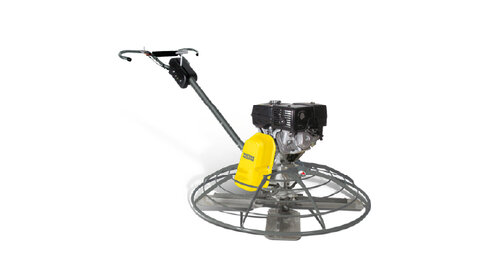More than 70% of the world’s population lives in a structure that uses concrete. It’s a vital resource for construction and civil engineering. Our roads, overpasses and bridges are all laid with concrete. Our parking lots and parking structures are built with it. Even buildings made with steel, glass and wood are built upon a concrete foundation. It is everywhere and has been for a very long time.
Ancient civilizations such as the Roman and Egyptian Empires initially invented concrete by combining volcanic ash or clay with water and sand to make concrete thousands of years ago. The Romans were particularly fond of concrete because of its properties and used it in their aqueducts and architecture. Perhaps their most famous concrete structure is the Roman Pantheon – its giant domed ceiling is entirely concrete.
In modern times, we may not use volcanic ash, but we rely on the same core concepts to build our own construction projects. This is possible with the power of modern technology and equipment; we are able to do much more.
How Is Concrete Made?
The basic ingredients of concrete consist of a handful of raw materials, which are mixed together to create the finished product: wet concrete.
- Cement - a fine powder substance that acts as a binder. Many different kinds of materials can make up cement, but you will commonly find limestone, gypsum and aluminum oxide as key components
- Water - combined with water to create the paste-like substance that primarily comprises concrete
- Aggregates - usually crushed stone, sand or gravel. The binder coats and suspends the aggregates once everything hardens
- Admixture - although not required to create concrete, ingredients such as calcium chloride can mitigate corrosion and other damages to the concrete
The properties of concrete are mostly dependent on the water-to-cement ratio, as well as the particle size of the aggregates. In general, however, concrete is strong, resistant to water and handles pressure well. The average slab of concrete can withstand 3,000 pounds of pressure.
Once you have the necessary ingredients, it’s time to mix. Concrete mixers are an excellent choice for your mixing purposes. The basic ingredients are mixed together in a steel or plastic drum. Most concrete mixers are small enough to be portable, so they are useful for pouring concrete, as well. If you have a larger quantity of concrete, a concrete bucket might be a better option. Even if they are not portable, they will keep your concrete fresh and away from contaminants, such as soil or plant matter.
Which Type Of Concrete To Choose?
Although all concrete is made of the same basic ingredients, it can vary dramatically in price, durability, strength and appearance. What type is best for the job depends on your budget and your needs.
Modern Concrete
Also referred to as normal concrete, this has no additional materials or admixtures. You can find this in virtually any hardware store, and it’s commonly used for smaller, at-home projects. This is partially because it is extremely cheap - you can find ready-mix concrete for about four cents per pound.
High-Strength Concrete
Commonly used to create building foundations and other support structures, high-strength concrete is made to withstand 6,000 pounds of pressure. It is reinforced with silica fume, which is mixed into the concrete at creation. Prices vary depending on the manufacturer, but on average, a pound of high-strength concrete costs about eight dollars.
Self-Consolidating Concrete
If you’re willing to spend a little more than usual, self-consolidating concrete can save you significant time and labor. Admixtures are added to this type of concrete so that the air is released from it as it dries. This not only creates denser concrete but it makes pouring and molding the concrete much easier. Self-consolidating concrete costs about $15 per yard.
Stamped Concrete
The makeup of this concrete does not differ from modern concrete. Once it’s poured, however, the wet concrete receives a stamp before drying to give the appearance of laid brick or stone. Sometimes, you can even find stamped concrete with color additives to make it appear like another material. A yard of stamped concrete will cost you about $30.
Limecrete
This type of concrete uses powdered limestone instead of cement as the binder. Although this doesn’t affect the durability and strength of the concrete, it is better suited for absorbing moisture and preventing mold. However, it can be pricey, at about $100 per yard.
High-Performance Concrete
Although not necessarily made to withstand more weight, high-performance concrete is still capable of handling extreme pressure. Some types of high-performance concrete can handle 29,000 pounds of pressure. This type of concrete is formulated with silica and quartz to make a more durable substance. Unsurprisingly, it is very expensive: around $2,000 for a cubic yard.
How Is Concrete Laid?
Laying concrete can be a delicate task, which is why it’s extremely important to follow the correct steps and utilize the right equipment. Before you lay the concrete, it is crucial that the concrete mixture is kept in its paste-like state. If it dries and hardens too quickly, the aggregate suspends unevenly, resulting in low-quality concrete that is more susceptible to corrosion and breaking.
You will also want to lay out your mold and any reinforcements you would like to add before pouring. Normal concrete will work fine in most applications, but further strengthening concrete can help mitigate some of its inherent disadvantages. There are two common types of strengthened concrete: reinforced concrete and prestressed concrete.
Reinforced concrete uses steel embedded in the concrete. The reinforcements can be rebars, rods, or mesh. The addition of steel helps prevent cracking and damage from vibrational forces, such as earthquakes.
Prestressed concrete also utilizes steel, typically in the form of cables or wires. These are used as anchors as the concrete cures and removed once the process is finished. Prestressed concrete is stronger than normal concrete, but it is lighter and easier to work with than reinforced concrete.
Once the concrete mix is ready to be laid, you’ll need a way to place it in the mold. In small quantities, you can attach a funnel or chute to the concrete bucket or mixer and use it to pour. You’ll likely want to use a concrete buggy for a larger amount. These machines come in many variations – some have wheels, while others have tracks.
Fresh concrete takes time to cure, but most of the time, it needs to be smoothed and finished within the first 48 hours. Concrete trowels and planers are great for smoothing out the surface. Once the mix is correctly set, it will need 28 days to turn into hardened concrete. In order to fully harden, the wet concrete will need heating. Usually, you can rely on exposure to the outdoors to take care of this, but if you are working in a cool environment, a concrete blanket will help trap heat.
After your concrete has fully hardened, you’re free to drill and cut it as you’d like. Make sure to use saws, demolition hammers and rivet busters designed to break through concrete. Using improper or improper tools can result in more than just ruined concrete – you could hurt yourself. Safety should always be a top priority on any jobsite.
Why Use Concrete?
While seeing cracks in your sidewalk might make you think otherwise, concrete is unmatched in its strength and durability. Concrete offers several advantages as a construction material, even aside from its strength.
Concrete Is Water-Resistant
As a complex and porous substance, concrete is resistant to erosion by water. This is especially useful in comparison to other building materials, such as steel, wood and iron. As a matter of fact, concrete is the second-most used material in the world, after water itself. That isn’t to say concrete does not deteriorate, but this corrosion is caused by chemicals in the water and not the water itself. Plenty of admixtures on the market can counteract erosion from these contaminants.
Concrete Is Resistant To Heat And Pressure
Unlike steel and wood, concrete does not transfer heat very well. However, it can withstand extremely high temperatures for hours on end. Similarly, the compound structure of normal concrete makes it incredibly resistant to pressure. While concrete can still crack and break, this is largely due to tensile force. Reinforced concrete and prestressed concrete can mitigate this.
Concrete Is Easy To Work With
In general, concrete requires less energy to produce and less effort to upkeep in comparison to other building materials. For example, concrete cures at average temperatures, whereas steel requires extreme heat to form into desirable shapes. Because of this, concrete actually requires less energy to produce than steel. Because it initially starts as a liquid, it is easier to mold and shape in comparison to other materials, making it extremely versatile.
It’s no surprise that more than 10 billion tons of concrete are produced each year. However, the most important part of any paving operation is finding the right equipment for the job. While concrete has a lot of advantages in industrial construction, the process of creating and laying concrete can quickly go wrong if you don’t use the right equipment for the job. When it comes to masonry and paving equipment, reach out to your nearest EquipmentShare location. We have all of your rental and equipment needs covered.

.svg)
.svg)














